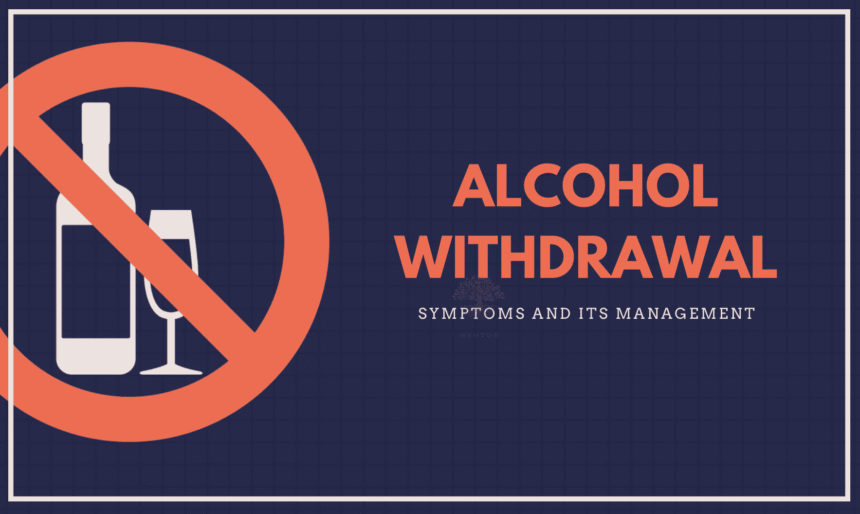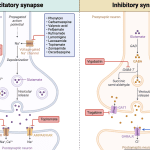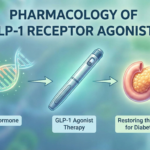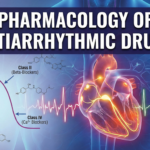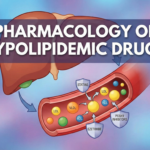1. Overview & Clinical Importance
Alcohol withdrawal syndrome (AWS) is a potentially life-threatening condition that follows the abrupt cessation or reduction of heavy, prolonged alcohol consumption. It is common in hospital and psychiatric settings, and timely recognition and management are critical for optimal outcomes. Chronic alcohol intake leads to neuroadaptations in GABAergic and glutamatergic neurotransmission; withdrawal unmasks CNS hyperexcitability, which can result in seizures and delirium tremens (DTs) [Katzung, Goodman & Gilman].
2. Pathophysiology
- Alcohol (ethanol): CNS depressant; chronic intake upregulates excitatory (NMDA/glutamate) pathways and downregulates inhibitory (GABA) pathways.
- Withdrawal: Sudden cessation triggers CNS hyperexcitability—a surge in glutamate activity and loss of inhibitory GABA tone.
- Risk Factors: Heavy daily intake, prior withdrawal events, co-morbid medical/psychiatric illness, advanced age.
3. Clinical Presentation: Stages and Timeline
| Time After Last Drink | Symptoms | Severity |
|---|---|---|
| 6–12 hours | Tremor, anxiety, insomnia, nausea, palpitations, sweating, headache | Mild |
| 12–24 hours | Confusion, irritability, increased BP/HR, perceptual disturbances (visual/auditory/tactile hallucinations) | Moderate |
| 24–48 hours | Risk for seizures (generalized tonic-clonic), increased autonomic activity | Severe |
| 48–72 hours | Delirium tremens (DTs): agitation, severe confusion, fever, hallucinations, hypertension, arrhythmia, severe tremor, dehydration | Life-threatening |
- Important: Not all patients progress to severe stages, but DTs/seizures are medical emergencies.
4. Complications and Risk Assessment
- Major Complications: Seizures, DTs, cardiac arrhythmias, aspiration pneumonia, electrolyte imbalances (hypokalemia, hypomagnesemia), dehydration.
- Assessment Tools: CIWA-Ar (Clinical Institute Withdrawal Assessment for Alcohol) scale—quantifies withdrawal severity, guides therapy.
5. Diagnosis
- Clinical diagnosis: Based on history, symptom pattern, and exclusion of mimics (sepsis, CNS infection, hypoglycemia).
- Lab findings: Elevated transaminases (AST > ALT), macrocytic anemia, elevated MCV, hypokalemia, hypomagnesemia.
6. Management Principles
A. General Measures
- Medical Supervision: Essential for moderate/severe withdrawal.
- IV fluids and electrolyte correction: Prevent and treat dehydration, hypokalemia, hypomagnesemia.
- Monitoring: Frequent vital signs, ECG, CIWA-Ar scoring.
- Nutritional support: Thiamine (B1) supplementation to prevent Wernicke’s encephalopathy; folate, multivitamins.
B. Pharmacologic Therapy
| Drug Class | Role | Examples | Key Considerations |
|---|---|---|---|
| Benzodiazepines | First-line for AWS, prevent/treat seizures and DTs | Diazepam, Chlordiazepoxide, Lorazepam | Long-acting preferred; adjust for hepatic function |
| Antipsychotics | Adjunct for severe agitation, hallucinations (not seizures) | Haloperidol, Olanzapine | Risk of lowering seizure threshold; use cautiously |
| Beta-blockers | Control autonomic symptoms | Propranolol | Do not prevent seizures/DTs—only adjunct |
| α2-agonists | Reduce sympathetic overdrive | Clonidine, Dexmedetomidine | Not monotherapy; combine with benzodiazepines |
Note: Avoid phenothiazines (e.g., chlorpromazine) due to seizure risk.
C. Other Measures
- Environmental: Quiet, well-lit room; minimize restraint; supportive nursing care.
- Psychological support: CBT, motivational interviewing, counseling.
- Long-term planning: Transition to outpatient care, relapse prevention, treatment for alcohol use disorder.
7. Special Considerations
- Pregnancy: Prefer lorazepam (short-acting, no active metabolites).
- Elderly/Hepatic Dysfunction: Prefer lorazepam or oxazepam (non-hepatic metabolism).
- Polysubstance withdrawal: Address coexisting opioid/benzodiazepine withdrawal accordingly.
8. Prognosis and Prevention
- Timely intervention lowers risk of DTs and death.
- Relapse prevention: Long-term therapy can include naltrexone, acamprosate, disulfiram (not for acute withdrawal).
9. Summary Table: Alcohol Withdrawal At a Glance
| Stage | Typical Symptoms | Treatment Focus |
|---|---|---|
| Mild | Tremor, anxiety | Outpatient if stable, monitor, supportive |
| Moderate | Confusion, hallucinations | Inpatient, benzodiazepines, electrolyte balance |
| Severe (DTs) | Seizures, severe agitation | Intensive care, IV benzodiazepines, antipsychotics adjunct, fluids |
10. Key Pearls & Take-home Messages
- Benzodiazepines are the mainstay for prevention and treatment of severe AWS/DTs.
- Thiamine must precede glucose administration to prevent Wernicke’s encephalopathy.
- CIWA-Ar score guides personalized therapy.
- Severe symptoms require ICU-level monitoring/management.
- Early intervention improves prognosis; untreated DTs can be fatal.
References
- Goodman & Gilman’s The Pharmacological Basis of Therapeutics (13th Ed.), Chapter: Ethanol Withdrawal
- Katzung BG, Basic & Clinical Pharmacology, Alcohol Withdrawal Syndrome Section
- American Society of Addiction Medicine (ASAM) Guidelines
- World Health Organization guidelines on alcohol withdrawal management
📚 AI Pharma Quiz Generator
🎉 Quiz Results
Medical Disclaimer
The medical information on this post is for general educational purposes only and is provided by Pharmacology Mentor. While we strive to keep content current and accurate, Pharmacology Mentor makes no representations or warranties, express or implied, regarding the completeness, accuracy, reliability, suitability, or availability of the post, the website, or any information, products, services, or related graphics for any purpose. This content is not a substitute for professional medical advice, diagnosis, or treatment; always seek the advice of your physician or other qualified health provider with any questions you may have regarding a medical condition and never disregard or delay seeking professional advice because of something you have read here. Reliance on any information provided is solely at your own risk.


